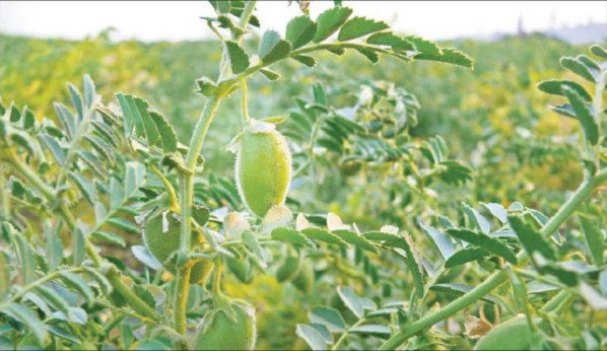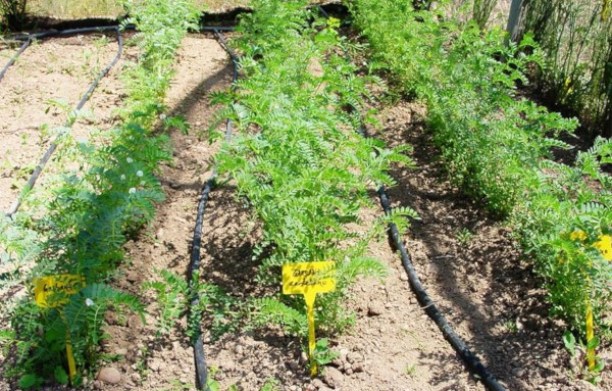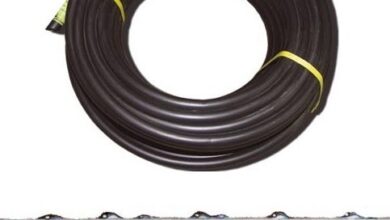Growing Chickpeas in the Garden: The Best Tips and Tricks

Hello to all gardeners! In today’s article we will learn how to grow chickpeas in our gardens. We will see how to prepare the ground, when to sow, what care it needs and, finally, when to harvest. You will see how it is not so difficult!

CHARACTERISTICS OF CHICKPEAS
Chickpea or Cicer arietinum is a crop from the Mediterranean region of Turkey and Syria. From this area it spread rapidly to Europe and later to Africa and America. The geographical diversification of chickpea cultivation has resulted in the consolidation of multiple species of chickpea, around 40. It is a crop belonging to the Fabaceae family.
Its easy cultivation, adaptation to the climate of the Iberian Peninsula and its nutritional qualities have made chickpea the most consumed legume in Spain, providing proteins, vitamins and minerals in abundance such as sodium, manganese, phosphorus, iron, zin and magnesium. It is also a source of unsaturated fat and fiber.
STEPS TO FOLLOW TO GROW CHICKPEAS IN THE ORCHARDS
1. PREPARATION OF THE GROUND AND SOWING
The chickpea requires siliceous-clay or silty soils that do not contain gypsum and are slightly acidic. It is important that prior to sowing we ensure that our garden has a deep and airy soil to allow the proper development of the roots. It is a crop that does not require a large amount of water, obtaining better crops in dry years.
As for the best time to grow chickpeas, it is considered that it should be sown between November and December, always taking advantage of the rainy season.
To prepare the land, it will be necessary to till the most superficial part of it, adding sand and fertilizer. Subsequently, the sowing of the seeds takes place, which we will cover with a thin layer of sand and we will not water again until 2 weeks later. The soil must be well-drained and compost-nourished.
The seeds should be planted about 4 cm deep. It is recommended to leave a space between them of 6 cm. The sowing process can also be carried out on a seedbed, allowing the seedlings to be approximately 8-10 cm tall before transplanting.
After a cycle of about 100 days we will obtain a bush of about 50-60 cm in height, of a dark green color. At harvest time our plant will have multiple pods with one or two chickpea seeds.

2. CARE THAT WE MUST TAKE INTO ACCOUNT
Due to its shrubby nature, it may be necessary to use some type of support to facilitate its development.
The weeding process must be done manually to avoid damaging the roots. Likewise, some professionals point to the benefits derived from adding compost a month and a half after planting, although being a legume it is capable of fixing atmospheric nitrogen. This not only allows meeting the needs of the plant in terms of this nutrient but also enriches the soil.
It is important to control the sowing density, trying not to exceed 30 plants per square meter.
Due to its needs for a well-drained soil, it is advisable to cultivate on land oriented at noon
3. IRRIGATION
Generally, this crop does not need a large amount of water, being able to grow in quite dry soils and resisting drought. Therefore, a watering 2 times a week is usually sufficient.
4. HARVEST
To choose the best time to harvest the chickpea it is necessary to observe the bush. The yellow color of the leaves and the green of the still young pods of the beans (about 5 cm approximately) is a fairly reliable indicator of the state of the crop. At that time the plant will be cut above ground or root level. The plants thus collected should be allowed to dry for about a week before threshing.
PESTS AND DISEASES OF CHICKPEAS
Among the most common diseases we find the chickpea fly, aphids that feed on the sap, Heliothis, mosaic virus, anthracnose, the Weevil, or the mining flies, especially common in Spain and that cause damage to the leaves.
In the same way, our plants can contract Chickpea Rabies, caused by a fungus that accelerates the drying of the stem and leaves of our chickpeas, preventing the proper development of the seeds. Likewise, Fusarium, which causes fusariosis, is a risk agent that alters the roots and obstructs the circulation of the sap.
CAN CHICKPEAS BE ASSOCIATED WITH OTHER CROPS?
Due to its nitrogen-fixing nature, it is commonly grown in association with plants that are highly dependent on it, such as broccoli, squash or grasses.
This is all for today, I hope you liked the article and that you start growing lentils in the garden. You can tell us about your experiences in the comments. See you in the next article!
Have a nice day!


![Photo of Prune the Lady of the Night: [Importance, Time, Tools, Considerations and Steps]](https://www.complete-gardening.com/wp-content/uploads/2021/06/Podar-Dama-de-Noche-390x220.jpg)
